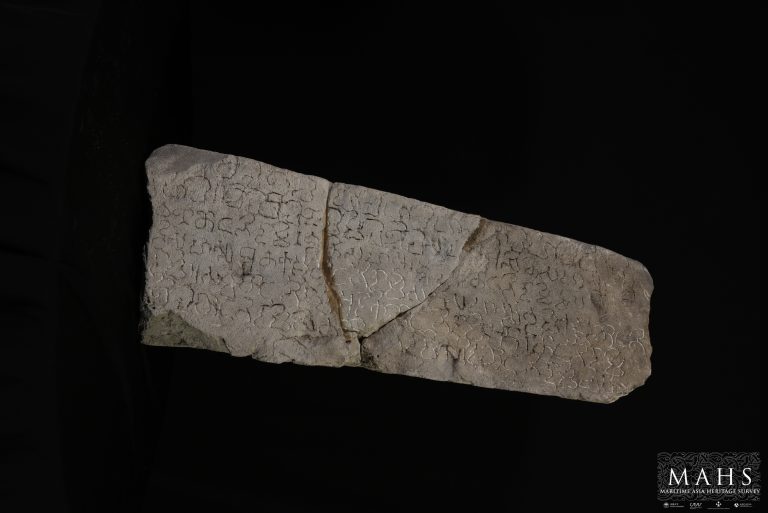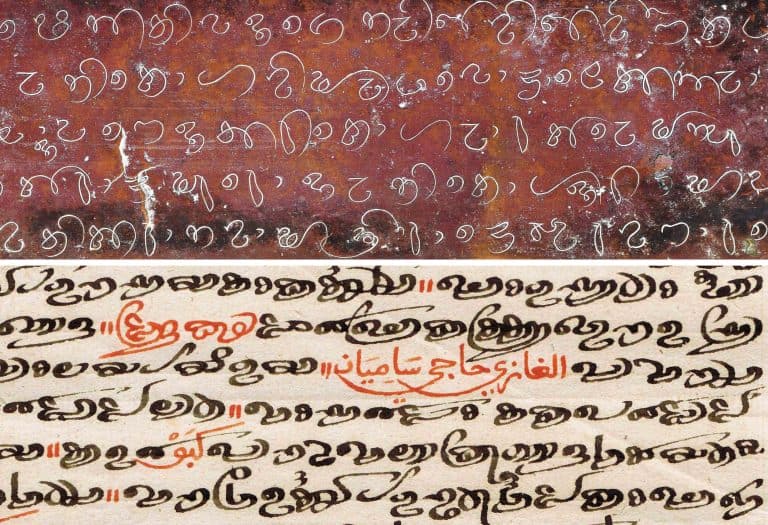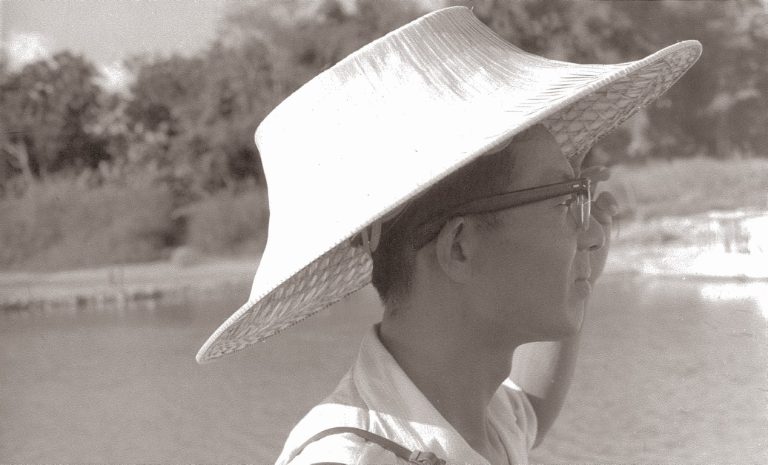KOAGANNU – AN ENDANGERED HERITAGE SITE IN THE MALDIVES
M Mauroof Jameel (Architect, Independent Researcher)
M Hamsha Hussain (Associate researcher and writer, the Coral Stone Mosque Research Project)
Koagannu, the oldest and largest cemetery complex in the Maldives was listed by the World Monuments Fund (https://www.wmf.org/project/koagannu-mosques-and-cemetery) among the 25 culturally significant but endangered heritage sites of the world in 2022 (Image 1). The site is considered a national heritage because of its history, size and uniqueness. It is now planned to be added to the existing UNESCO World Heritage Tentative List on Coral Stone Mosques of Maldives. But the damaging effect of climate change, vandalism, and lack of awareness of conservation are already visible on the site.

Koagannu (link to MAHS Arches database) is located at the northern seafront of the island of Hulhumeedhoo, originally considered two islands, Hulhudhoo and Meedhoo in Addu Atoll. The island was an important centre of Islamic learning until the 20th century. Many believe Islam was first introduced to the Maldives by Yousuf Naib, an Arab traveller who arrived in Meedhoo in c1126. Grave markers associated with members of his family are in Koagannu Cemetery and many from the island including Addu Bodu Fandiyaaru Thakurufaan (to whom Hulhumeedhoo Fandiyaaru Miskiiy is dedicated) trace their ancestry to his family.

Today the 9800sqm large site (Image 2), just 50m away from the beach, has 1535 coral grave markers, a sheltered mausoleum, 15 open mausoleums, 4 small mosques, a short step minaret and 3 water wells withstanding on the site (3D model, Koagannu Cemetery and Mosque (MAHS-MDV-SEN-HMD-S-001)). The fragments of grave markers currently seen throughout the site are evidence that once there were even more grave markers (Image 3). Among the many surviving grave markers is the tallest known single-piece Porites coral stone grave marker in the world (2.4m), and many belong to great scholars and nobles of the country (Image 4 and 5). The four mosques are Koagannu Miskiiy c.1397, Boadhaa Miskiiy c.1403, Athara Miskiiy c.1417 and Hulhumeedhoo Fandiyaaru Miskiiy c.1586. As per anecdotal evidence, there were seven mosques on the site associated with traditional noble families of the island. They were maintained by these families until 1970.
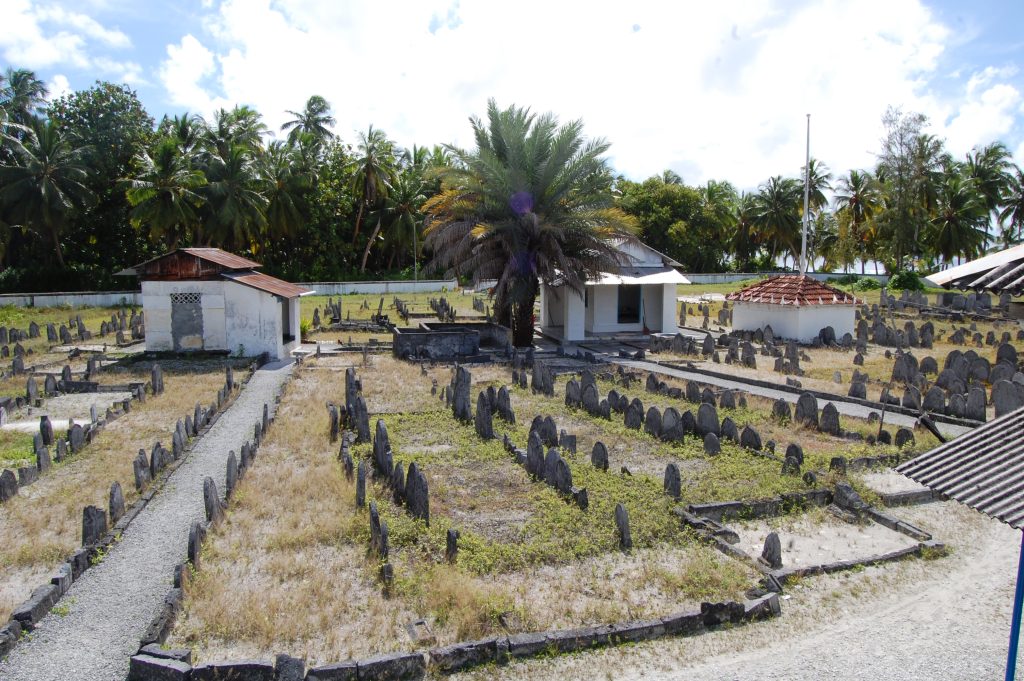
It is likely that the site has a history as a burial ground prior to the spread of Islam in Meedhoo. According to investigations done in 2017 by Stephane Pradines, Professor of Archaeology from Aga Khan University, the site records five different phases of use. The first phase of human activity on the site was on virgin land probably during the pre or early Islamic period. The second phase was a dormant period with little human activity closer to the construction of Hulhumeedhoo Fandiyaaru Miskiiy around the 15th/16th century. The third phase was a period of high activity in the 16th century with the construction and extension of Hulhumeedhoo Fandiyaaru Miskiiy. The fourth phase was also a period of high activity around the 17th/18th century with evidence of many grave markers and porcelain fragments. The fifth phase continued with high activity with the fenda added to the mosque in the 20th century.
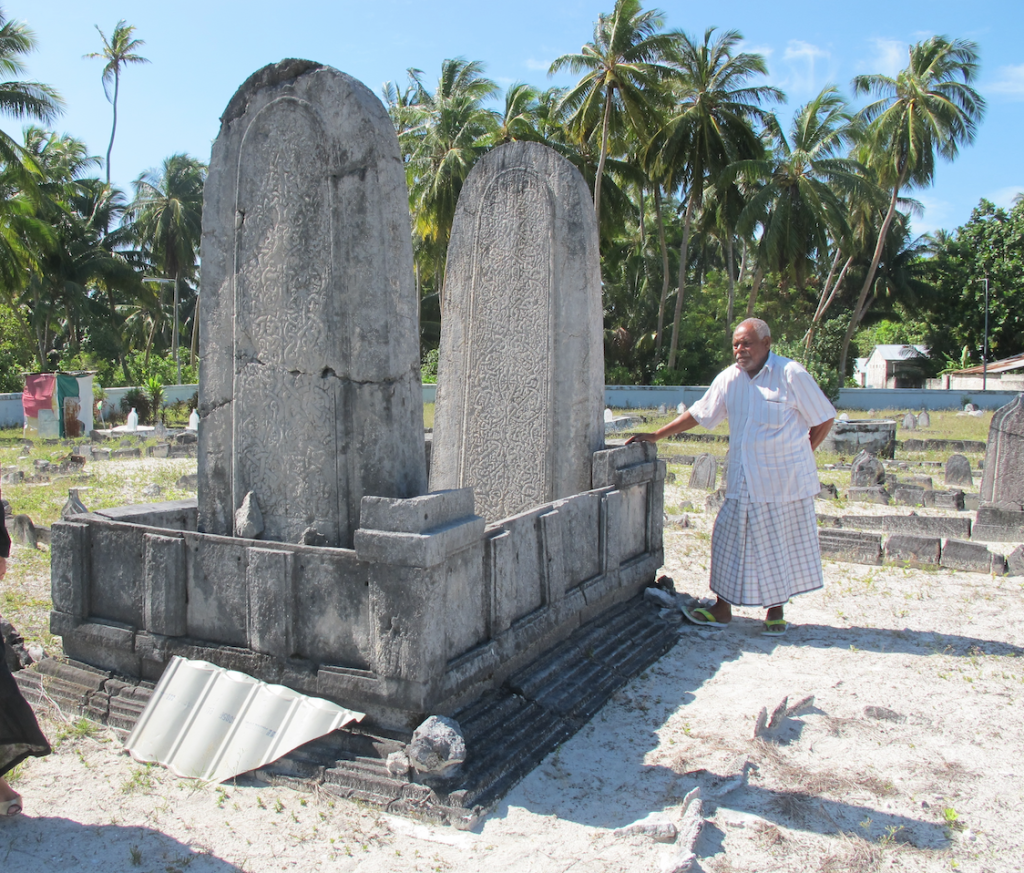
Koagannu is a unique burial ground with mosques and other structures made from coral stone (Image 6). It bears witness to a unique knowledge system associated with Porites coral stone (extraction of coral from the sea, shaping to blocks, drying, assembling, and carving). The buildings, the iconography of decorations and the carvings of the structures on the site bear testimony to the interchange between cultures of the Indian Ocean region as well as the connectivity to the pre-Islamic Buddhist culture that preceded Islam. The structures also give insight into extinct knowledge systems, historic, political, and religious traditions of the society, management of mosques, community, and family patronage.
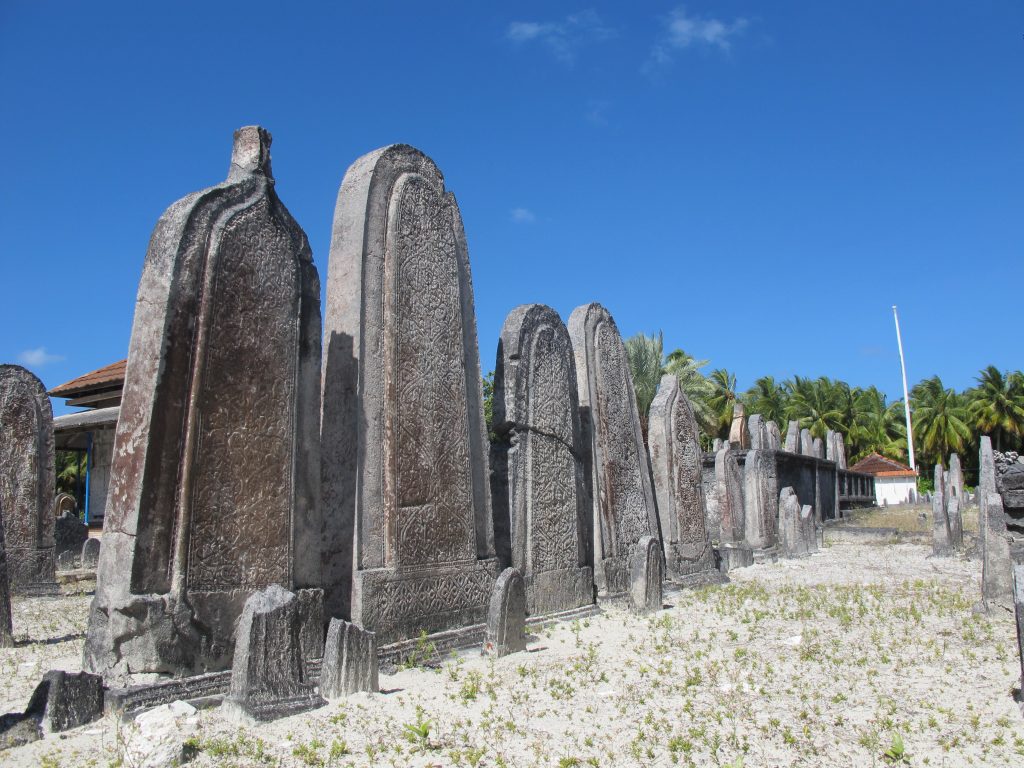
Koagannu cemetery still preserves the rich traditions continuing as a cemetery and serving the communal life but the damaging effects to the site are very visible. As highlighted in earlier work of the MAHS on site, Koagannu site and the islands that surround it face considerable environmental threat (https://maritimeasiaheritage.cseas.kyoto-u.ac.jp/accelerating-environmental-threats-in-addu/). The beach, just 50m across the site has experienced strong storm surges due to extreme weather recently, causing the beach to erode significantly. Without protecting the beach future damage to the site is inevitable. The site is exposed to vandalism and was seriously vandalized as late as October 2021 when many coral stone grave markers were broken. Efforts to protect the site are still not sufficient to protect the site. The site also faces misguided maintenance and repair that affects the authenticity and integrity of the structures. The existing 4 small mosques and Medhu Ziyaaraiy (shrine mausoleum) are in conditions affecting the authenticity due to past repair and maintenance. For example, all the mosques have been laid with modern ceramic tiles and corrugated iron roofing. Systematic conservation is required to upkeep the authenticity and integrity of the structures.
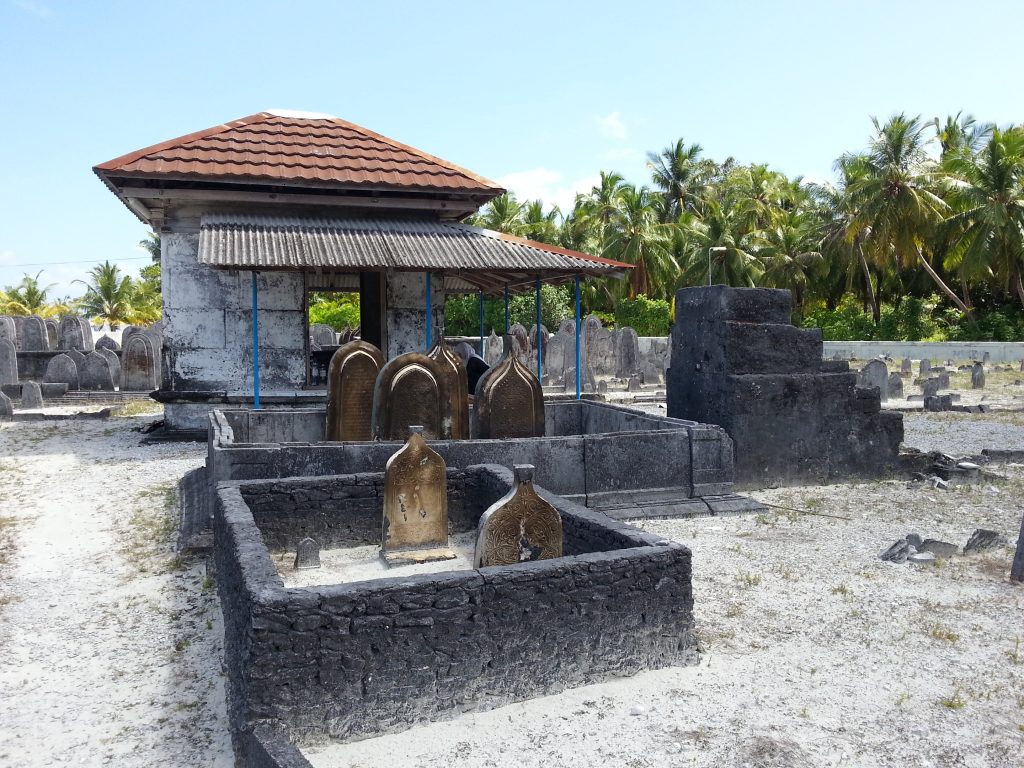
The National Center for Cultural Heritage of the Maldives (NCCH) is working towards adding the site to the existing UNESCO World Heritage Tentative List on Coral Stone Mosques of Maldives. One of the primary sources of information for their work with WMF and local consultants is documentation provided by the MHS/MAHS. The WMF is still seeking further support for a condition assessment of Koagannu, reverse inappropriate interventions to the surviving mosques and build local capacity in maintenance that will contribute to the long-term preservation of the cemetery.
References
Arches MAHS (2022) Site – Koagannu Cemetery (Mosque Complex) Retrieved 8.7.2022 from https://arches.maritimeasiaheritage.cseas.kyoto-u.ac.jp/report/abb60d19-4fb7-4f62-8ea3-ddee603fd2bb
Coral Stone Mosques of Maldives (2022) Hulhumeedhoo Fandiyaaru Mosque. Retrieved 8.7.2022, from https://coralstonemosques.com/hulhumeedhoo-fandiyaru-mosque/
Jameel, Mauroof. 2017. “Exhibition Booklet – Coral Stone Mosques of Maldives: The Vanishing Legacy of the Indian Ocean.” Accessed 15 November 2018 Retrieved 8.7.2022
Jameel, Mauroof and Ahmad, Yahaya. 2015. “Coral Stone Mosques of Maldives; the vanishing legacy of the Indian Ocean.” Retrieved 8.7.2022, Accessed 15 November 2018
Pradines, S. (2017). Projects: Archaeological investigations on the Coral stone mosques of the Maldives. Retrieved 8.7.2022, from https://maxvanberchem.org/en/scientific-activities/projects/archeology/11-archeologie/171-archaeological-investigations-on-the-coral-stone-mosques-of-the-maldives
The Times of Addu (2022) 900-year-old Koagannu cemetery in Addu City Vandalized. Retrieved 8.7.2022 from https://timesofaddu.com/2021/10/25/900-year-old-koagannu-cemetery-in-addu-city-vandalized/
UNESCO WHC (2022) Coral Stone Mosques of Maldives. Retrieved 8.7.2022 from https://whc.unesco.org/en/tentativelists/5812/
World Monuments Fund (2022) Koagannu Mosque and Cemetery. Retrieved 8.7.2022 from https://www.wmf.org/project/koagannu-mosques-and-cemetery

